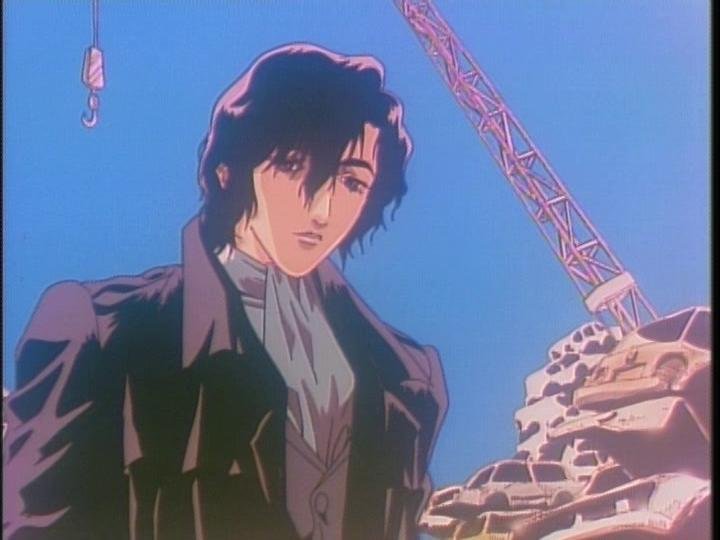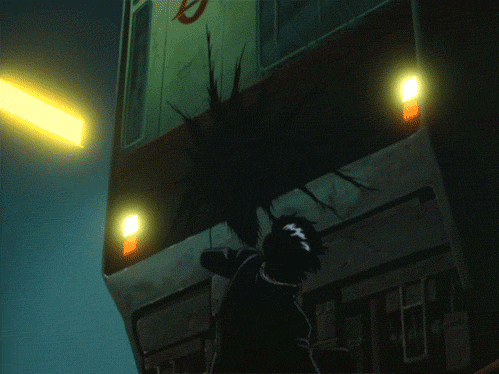Top 10 Underrated OVAs
Hello, anime aficionados! Today, we're delving deep into the world of Original Video Animations (OVAs). These standalone or series-based anime productions offer unique stories, innovative animation, and a chance to explore concepts often untouched by mainstream series. Here are ten underrated OVAs that showcase the creativity and diversity of anime.
Riding Bean (1989)
Riding Bean introduces us to Bean Bandit — the "Roadbuster" of Chicago. This OVA combines high-speed car chases with a compelling narrative about a courier who gets wrapped up in a kidnapping scheme. Its blend of intense action and comedic moments, paired with crisp animation, captures the vibrant energy of the late '80s anime scene.
The visual execution is as dynamic as its protagonist, with detailed car designs and bustling cityscapes that pull viewers into its fast-paced world. Despite its short length, **Riding Bean** offers a complete and thrilling ride that leaves you wanting more from its charismatic lead.
Goku Midnight Eye (1989)
Goku Midnight Eye throws us into a cyberpunk vision of Tokyo, where detective Goku Furinji wields an electronic eye that can hack any computer system. This OVA mixes hard-boiled detective work with futuristic technology, creating a stylish noir narrative that explores the darker sides of surveillance and power.
The animation and character design reflect the neon-drenched cyberpunk aesthetic, with detailed urban environments and imaginative tech that perfectly fit the story’s moody tone. For fans of science fiction and detective stories, Goku Midnight Eye is a must-watch.
Cyber City Oedo 808 (1990)
Set in the year 2808, Cyber City Oedo 808 features three criminals forced to work for the police to commute their sentences. Each episode dives into the dark underbelly of a futuristic Tokyo, delivering gritty stories of crime and redemption.
Visually, this OVA stands out for its bold color palette and intense action sequences, effectively combining traditional animation techniques with early CGI. The dark, atmospheric storytelling is enhanced by its visual grit, making it a standout cyberpunk narrative.
Area 88 (1985)
Area 88 examines the harrowing life of a pilot coerced into fighting a foreign war. This dramatic OVA is both a character study and an exploration of the psychological impacts of war, portrayed through beautifully detailed aerial combat sequences.
The animation captures the desolation of the desert and the claustrophobia of the cockpit, offering a visually immersive experience that complements the emotional depth of the story. **Area 88** is a poignant look at loss, loyalty, and the cost of conflict.
Iria: Zeiram the Animation (1994)
Iria: Zeiram the Animation follows Iria, a bounty hunter battling an immortal alien entity. This action-packed OVA is notable for its strong female protagonist and a richly developed sci-fi universe that grabs your attention from the outset.
The visual style is elaborate, with vibrant animation and inventive creature designs that bring its alien encounters to life. Combining suspense and detailed world-building, Iria provides a thrilling adventure that’s visually captivating and narratively engaging.
Detonator Orgun (1991-1993)
Detonator Orgun dives into the identity and conflict of Tomoru Shindo, who merges with an alien mecha to fend off invaders. This OVA melds philosophical inquiry with explosive mecha action, set against a backdrop of existential threat.
The animation is detailed, showcasing complex mecha designs and dynamic battle sequences that are both visually and emotionally compelling. Detonator Orgun is a feast for the eyes and the mind, appealing to fans of deeper narrative explorations within the mecha genre.
Darkside Blues (1994)
Darkside Blues presents a dystopian future where a mysterious figure named Darkside emerges in a corporately dominated world. This OVA blends cyberpunk elements with dark fantasy, creating a moody, atmospheric narrative that questions freedom and identity.
The animation style enhances the OVA’s enigmatic tone, using shadow and light to craft a visually intriguing world that’s as mysterious as its titular character. Darkside Blues is a visually stunning and intellectually stimulating film that invites viewers to ponder deeper philosophical questions.
Demon City Shinjuku (1988)
Demon City Shinjuku presents a chilling vision of Tokyo, transformed into a nightmarish landscape where dark forces roam freely. After a powerful psychic duel leaves Shinjuku as a demon-infested wasteland, the young hero Kyoya must venture into this dangerous world to save both his father and the planet from an impending demonic invasion.
Visually, the OVA is a standout for its detailed depictions of urban decay and demonic entities. The animation style is quintessentially late '80s with a grittiness that suits the dark and apocalyptic themes of the story. The effective use of shadows and unsettling character designs elevate the horror and mystique of Shinjuku, making it not just a setting but a character in its own right. This OVA is a must-watch for fans of horror and supernatural genres, as it skillfully combines its visual elements with a compelling, dark narrative.
Patlabor (1988)
Patlabor: The Mobile Police is an essential OVA series for any mecha or science fiction fan, released in 1988. The series is set in a near-future Tokyo and follows the Special Vehicles Division, a team equipped with humanoid robots known as "Labors." These machines are typically used for construction purposes, but as Labor-related crimes rise, the police division’s Patlabors (patrol Labors) become crucial in maintaining peace. The series combines elements of police procedural drama with the strategic deployment of mecha, offering a fresh take on the genre by integrating everyday law enforcement challenges.
Visually, Patlabor stands out with its realistic design and setting, contrasting sharply with more fantastical mecha anime. The animation effectively captures the weight and cumbersome nature of the Labors, grounding the fantastical elements in a more believable world. The OVA’s attention to detail, from the mechanics of the Labors to the urban landscape of Tokyo, adds a layer of authenticity that enhances the narrative’s tension and the characters’ interactions. This focus on realism extends to the storytelling, where the socio-political implications of technology and labor are explored, making it a thoughtful and engaging series.
Angel's Egg (1985)
Angel's Egg is a hauntingly beautiful and enigmatic OVA that stands as a pinnacle of artistic animation in anime. Released in 1985 and directed by Mamoru Oshii, this film is known for its minimal dialogue and rich visual storytelling. The plot, if it can be distinctly defined, follows a young girl living alone in a desolate, otherworldly city, who protects a mysterious egg. The narrative is steeped in Christian symbolism and deep philosophical questions, leaving much to the audience’s interpretation.
The visuals in Angel's Egg are nothing short of spectacular, with its dream-like sequences filled with surreal landscapes and gothic architecture that seem to blend seamlessly into the dark, expansive sea and sky. The use of shadow and light is masterful, creating a sense of depth and mystery that complements the film’s meditative pace. Every frame is meticulously crafted, serving as a piece of visual poetry that invites viewers to find their own meaning within its silent, brooding beauty. The OVA is a unique artistic exploration of themes like faith, innocence, and loss, making it a profound viewing experience for those seeking something deeply contemplative and visually unique.
Each of these OVAs showcases a unique aspect of anime storytelling and animation. Whether you're drawn to intense action, complex narratives, or stunning visual artistry, these underrated OVAs are sure to provide a rich and rewarding viewing experience, demonstrating the incredible range and depth of the medium.






